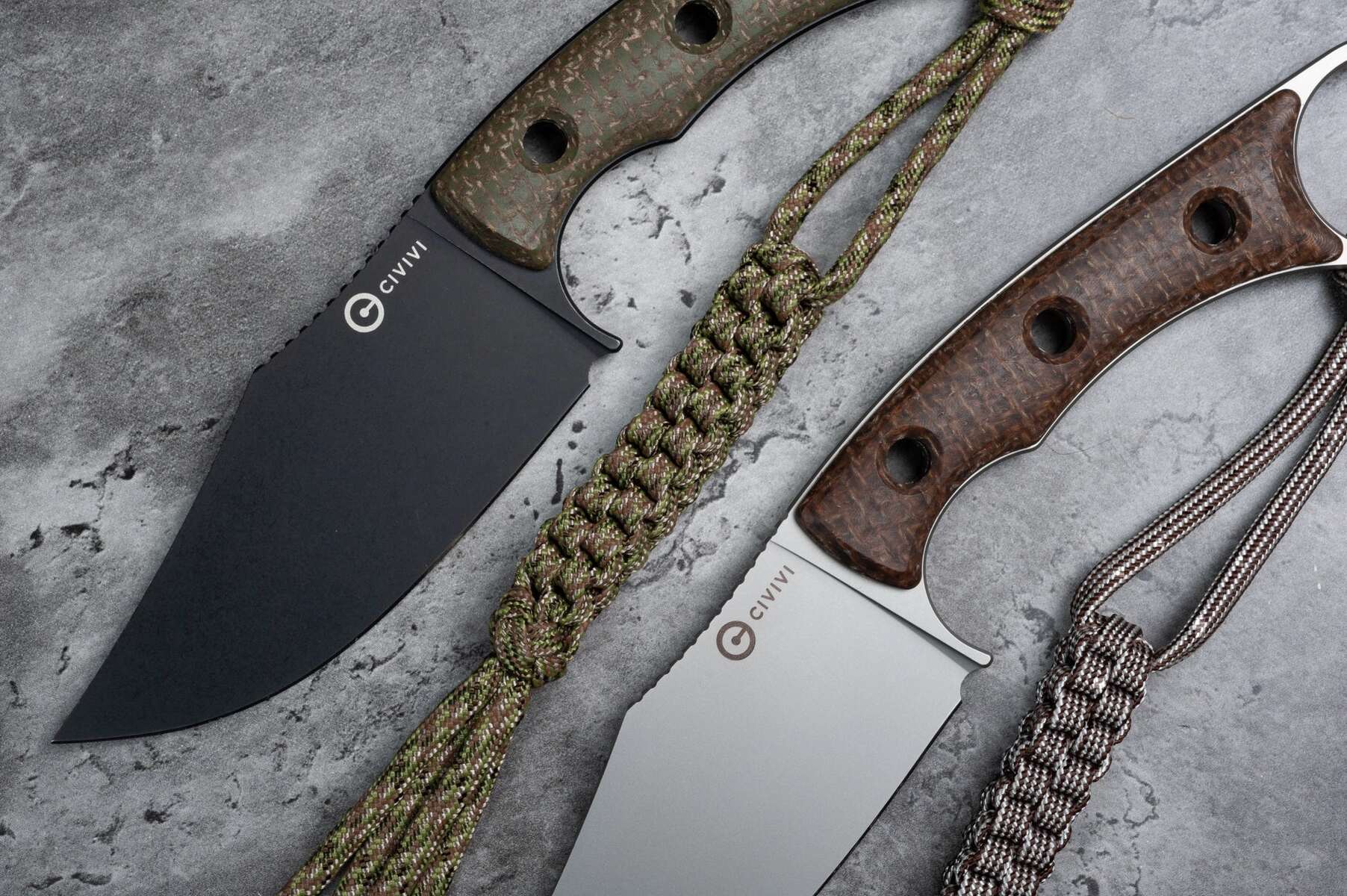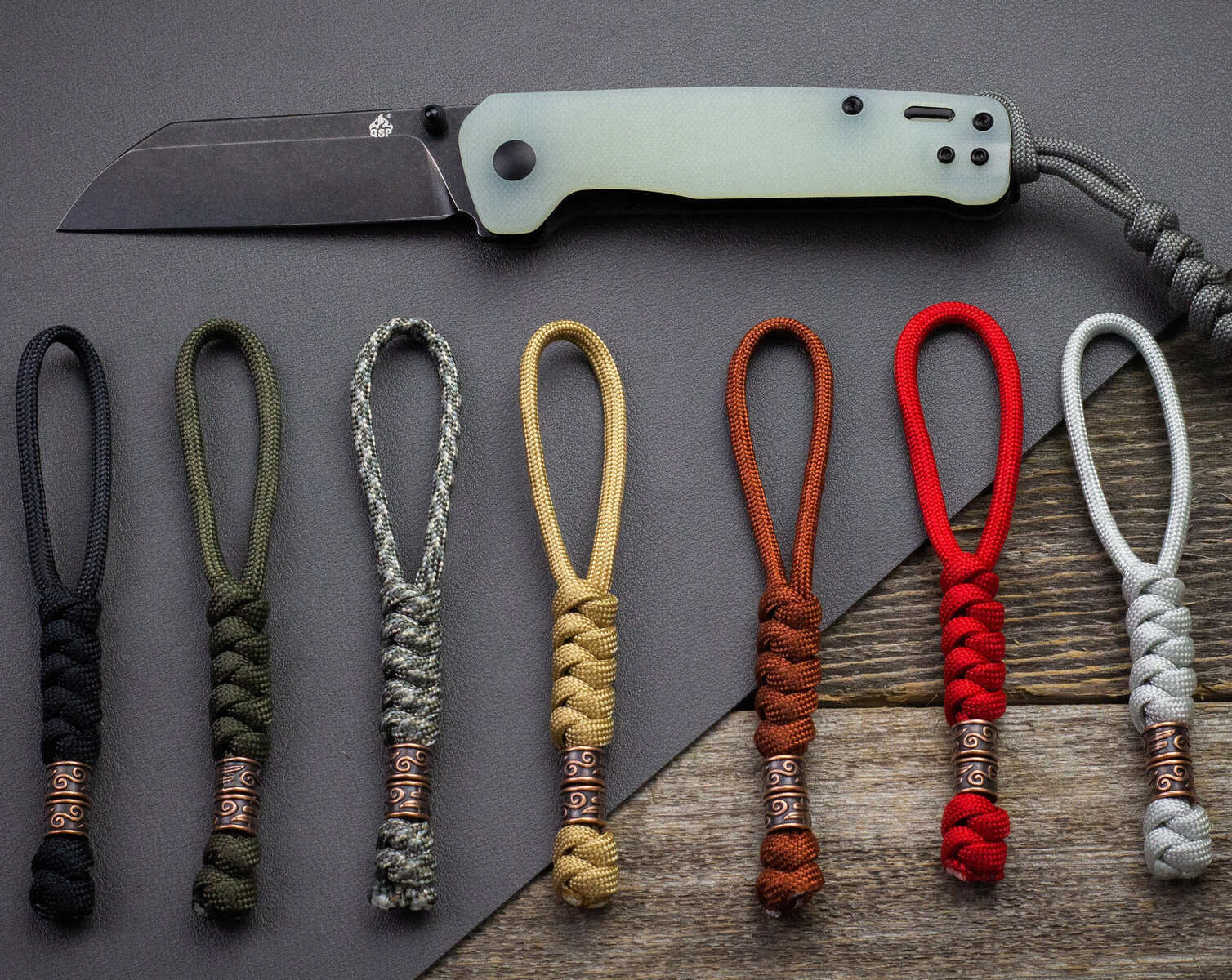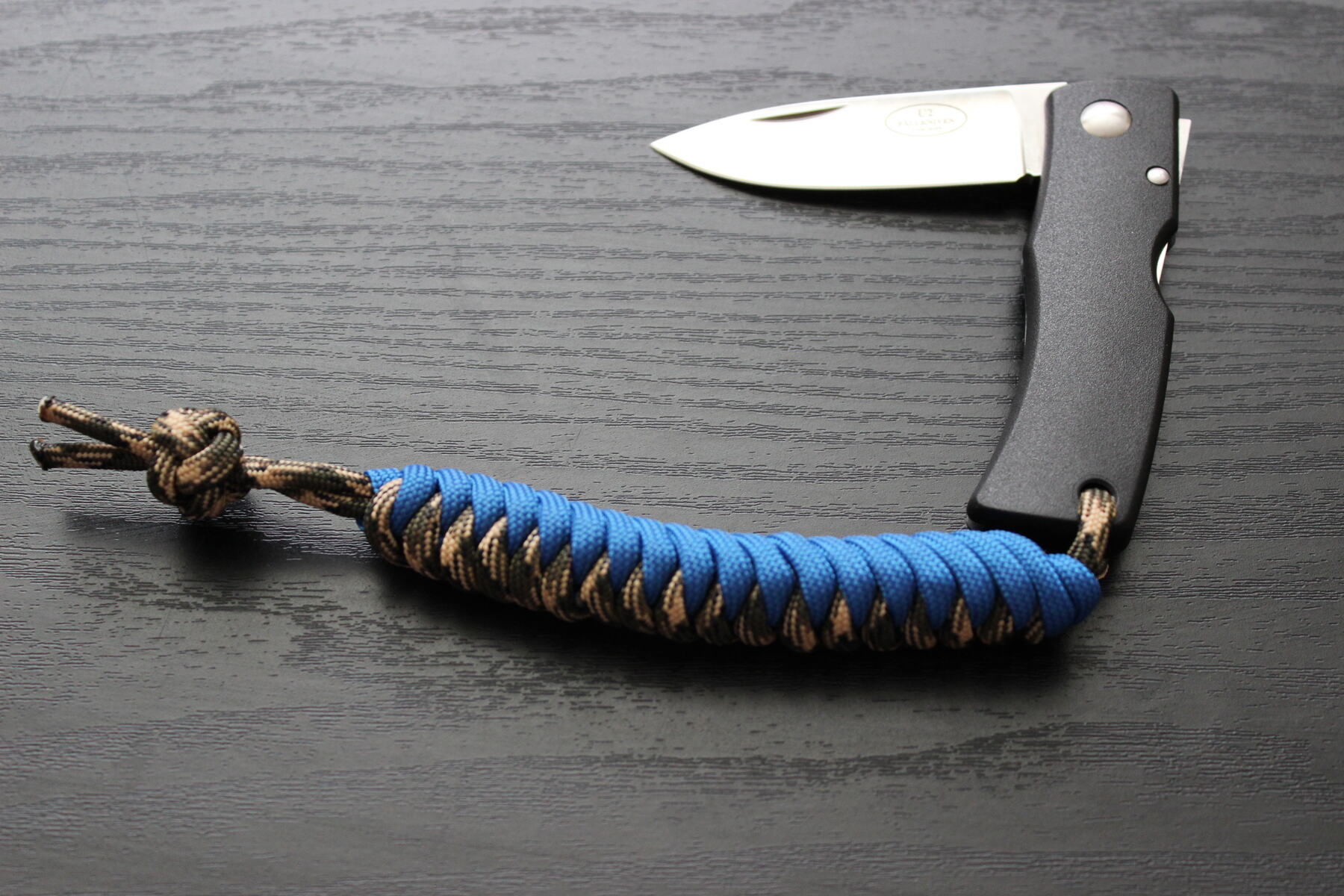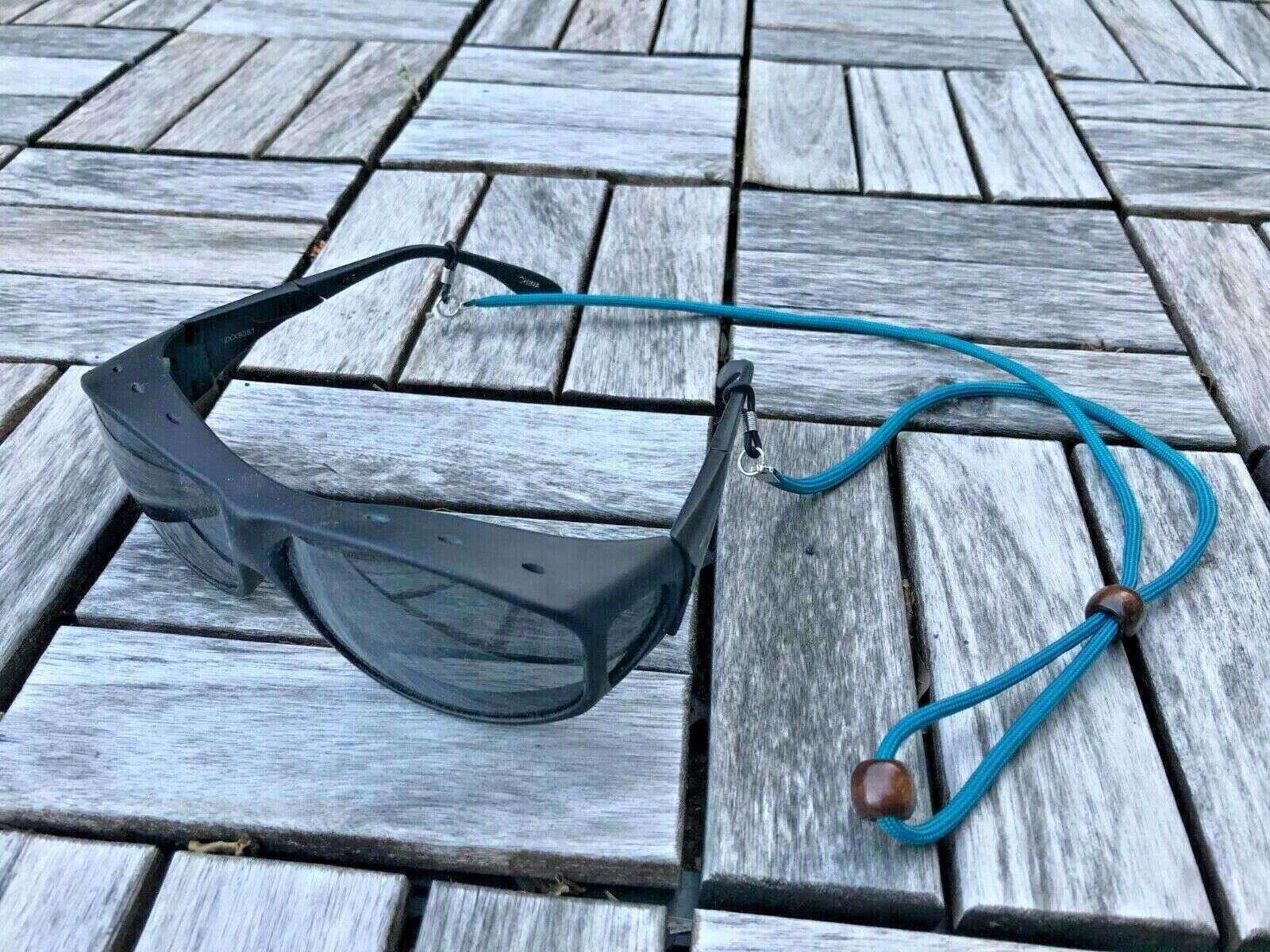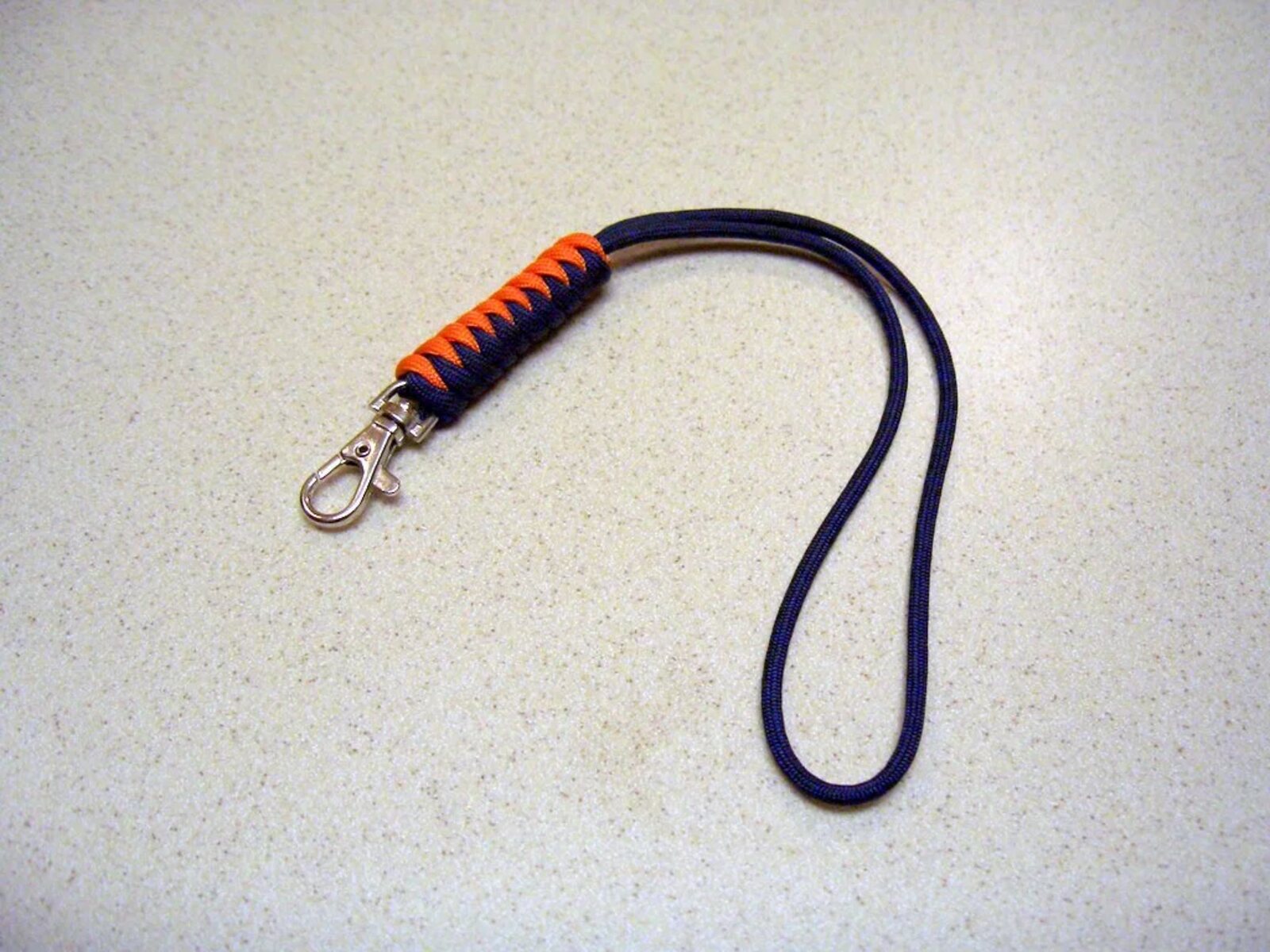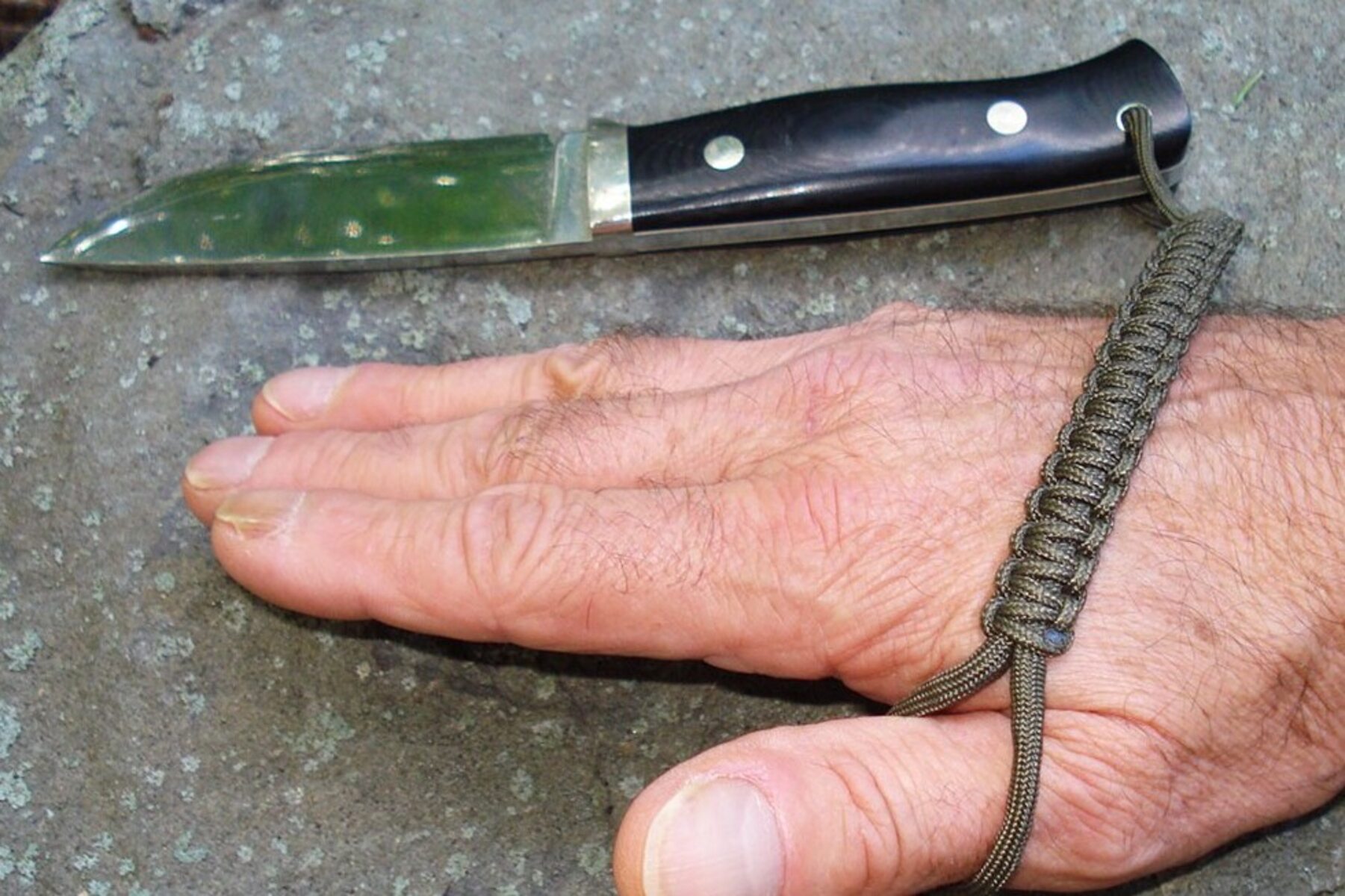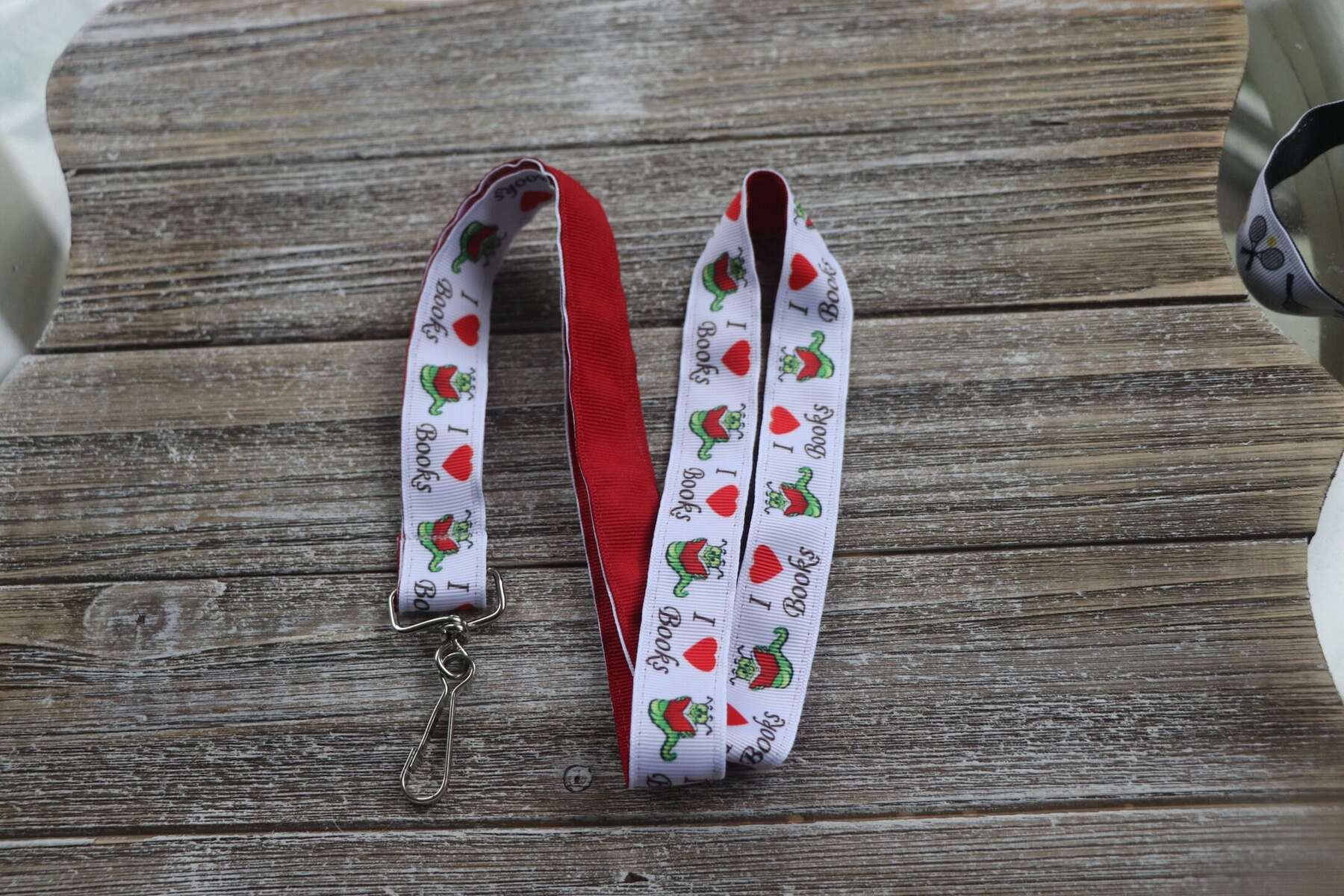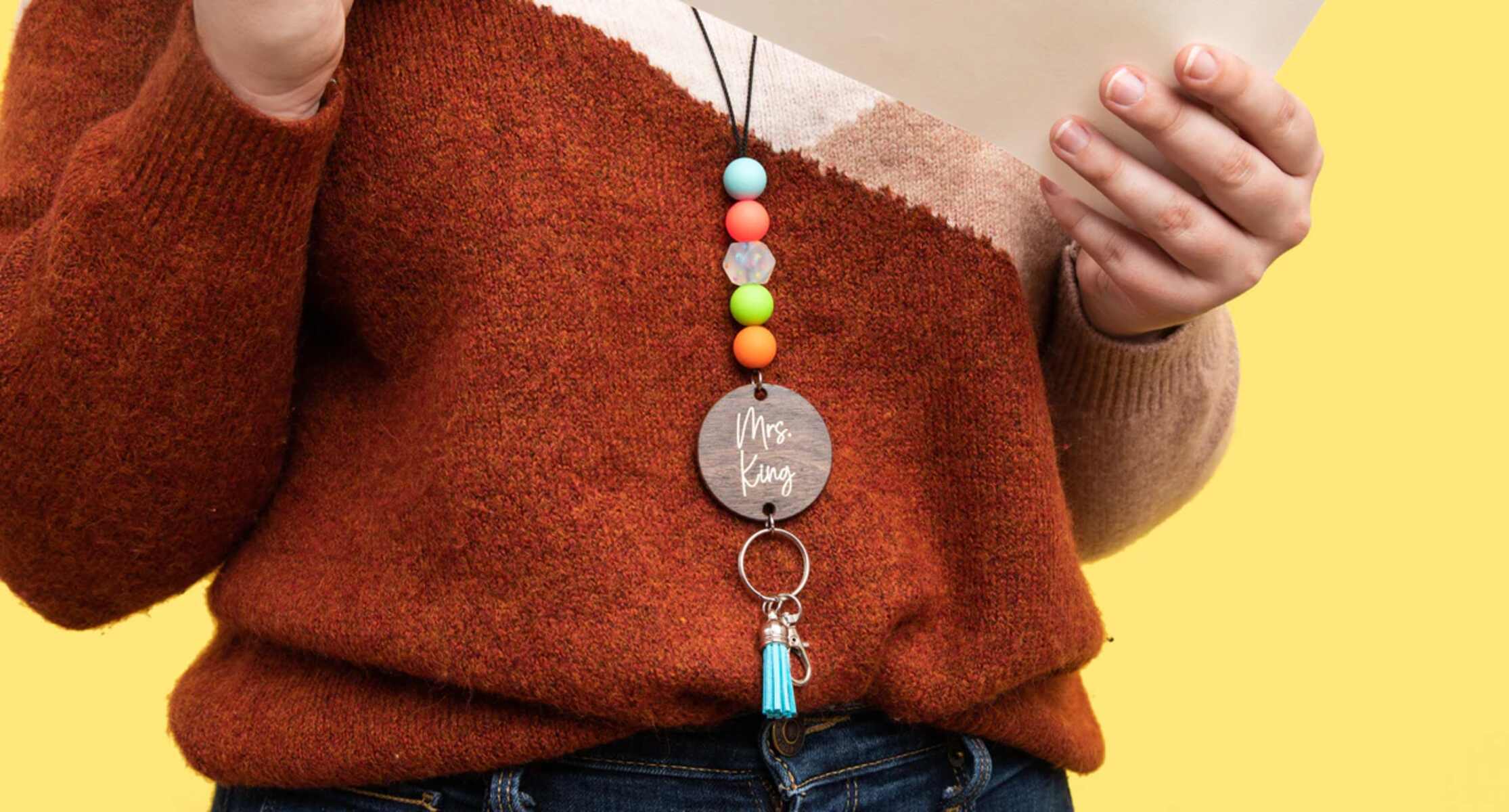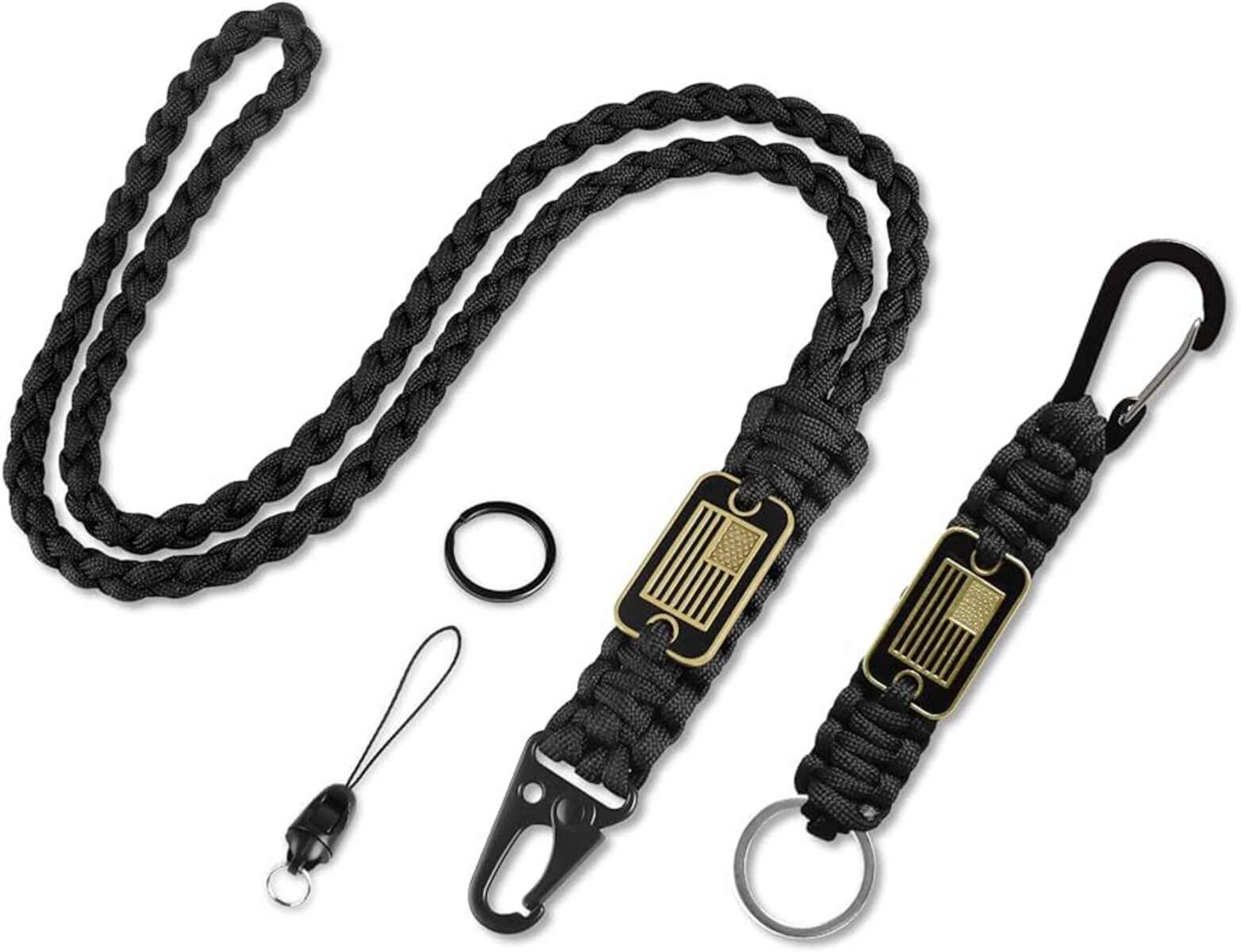Introduction
Crafting paracord knife lanyards is a practical and rewarding DIY project that not only adds a personalized touch to your gear but also serves a functional purpose. Whether you're an outdoor enthusiast, a survivalist, or simply someone who appreciates the versatility of paracord, mastering the art of making knife lanyards can be a valuable skill. These lanyards not only enhance the aesthetic appeal of your knife but also provide a secure grip and easy retrieval, making them a popular accessory for outdoor and everyday carry (EDC) knives.
In this comprehensive tutorial, you'll learn the essential steps to create your own paracord knife lanyards. From selecting the right type of paracord to mastering the intricate knots, this guide will equip you with the knowledge and skills needed to embark on this engaging DIY endeavor. By the end of this tutorial, you'll have a practical and stylish lanyard that not only complements your knife but also reflects your unique style and craftsmanship.
Crafting paracord knife lanyards is not only a practical skill but also a creative expression of individuality. The process of weaving and knotting paracord allows you to infuse your personal touch, whether it's through the choice of colors, patterns, or decorative knots. Moreover, the satisfaction of creating a functional and visually appealing accessory with your own hands is truly gratifying.
Whether you're a seasoned paracord enthusiast or a beginner looking to delve into the world of knot crafting, this tutorial will provide you with the fundamental knowledge and step-by-step instructions to embark on this fulfilling DIY journey. So, gather your materials and let's dive into the art of crafting paracord knife lanyards, where functionality meets creativity in a practical and stylish fusion.
Materials Needed
To embark on the fulfilling journey of crafting paracord knife lanyards, you'll need a few essential materials and tools. Gathering these items is the first step towards creating a practical and stylish accessory for your knife. Here's a detailed list of the materials you'll need for this DIY project:
-
Paracord: The primary material for crafting knife lanyards is, of course, paracord. When selecting paracord for this project, it's crucial to choose a type that is both durable and visually appealing. 550 paracord, named for its minimum breaking strength of 550 pounds, is a popular choice due to its strength and versatility. Additionally, consider the color and pattern of the paracord, as this will contribute to the aesthetic appeal of the finished lanyard.
-
Knife: The knife to which you'll be attaching the lanyard is an essential component of this project. Whether it's a survival knife, EDC knife, or outdoor utility knife, ensure that the size and design of the knife align with the intended use of the lanyard. This will help determine the length of the lanyard and guide your choice of paracord color to complement the knife.
-
Scissors or Knife: You'll need a sharp tool for cutting the paracord to the desired length. Scissors or a sharp knife can be used to cleanly cut the paracord without fraying the ends.
-
Lighter or Heat Source: Melting the ends of the paracord is essential to prevent fraying and secure the knots. A lighter or another heat source, such as a candle or heat gun, can be used to carefully melt the ends of the paracord.
-
Ruler or Measuring Tape: Accurately measuring the length of the paracord is crucial for ensuring that the lanyard fits the knife and serves its purpose effectively. A ruler or measuring tape will aid in precise measurements before cutting the paracord.
-
Optional: Decorative Beads or Charms: If you wish to add a personalized touch to your lanyard, decorative beads or charms can be incorporated into the design. These embellishments can enhance the visual appeal of the lanyard and reflect your unique style.
By gathering these materials, you'll be well-equipped to commence the process of crafting paracord knife lanyards. With these essential items at hand, you're ready to move on to the next step: choosing the right paracord for your project.
Step 1: Choosing the Right Paracord
Selecting the appropriate paracord is the foundational step in crafting a durable and visually appealing knife lanyard. When choosing paracord for this project, it's essential to consider both its functional and aesthetic aspects. The most commonly used type of paracord for crafting knife lanyards is 550 paracord, renowned for its strength and versatility. The "550" designation signifies its minimum breaking strength of 550 pounds, making it a reliable choice for various applications.
One of the key considerations when choosing paracord is its durability. The paracord should be able to withstand the rigors of outdoor use and everyday carry, ensuring that the lanyard remains intact and functional in diverse environments. Additionally, the flexibility of the paracord is crucial, as it impacts the ease of handling and knotting during the crafting process.
Beyond functionality, the visual appeal of the paracord also plays a significant role. With a wide array of colors and patterns available, you have the opportunity to personalize the lanyard to match your style and preferences. Whether you opt for a vibrant and eye-catching color or a subdued and tactical tone, the choice of paracord color can complement the aesthetics of your knife while reflecting your individuality.
Furthermore, consider the length of paracord needed for the lanyard based on the size and design of your knife. A larger knife may require a longer lanyard, while a smaller EDC knife may necessitate a more compact design. Ensuring that the length of the paracord aligns with the intended use and handling of the knife is crucial for crafting a lanyard that not only looks great but also serves its functional purpose effectively.
In summary, when choosing the right paracord for crafting knife lanyards, prioritize durability, flexibility, and visual appeal. By selecting high-quality paracord that aligns with the size and design of your knife, you'll lay a solid foundation for creating a lanyard that seamlessly integrates functionality with personalized style. With the right paracord in hand, you're ready to move on to the next step in this engaging DIY tutorial.
Step 2: Measuring and Cutting the Paracord
Accurately measuring and cutting the paracord is a crucial step in the process of crafting a functional and visually appealing knife lanyard. This step ensures that the lanyard fits the knife perfectly and serves its intended purpose effectively. To begin, gather the necessary materials, including the selected paracord, a ruler or measuring tape, and a sharp cutting tool such as scissors or a knife.
Start by determining the desired length of the lanyard based on the size and design of your knife. For larger knives, a longer lanyard may be preferred to allow for a secure grip and ease of retrieval. Conversely, smaller EDC knives may require a more compact lanyard for practicality and aesthetics. Once the desired length is established, use the ruler or measuring tape to measure and mark the paracord accordingly.
When marking the paracord for cutting, it's advisable to add a few extra inches to the measured length to account for any variations in knotting and weaving. This additional length provides a margin for error and ensures that the lanyard will not end up too short after the knotting process. Once the paracord is accurately marked, use sharp scissors or a knife to make a clean and precise cut at the marked point.
After cutting the paracord to the desired length, it's essential to prevent fraying and secure the ends to maintain the integrity of the lanyard. Using a lighter or another heat source, carefully melt the cut ends of the paracord to seal them. Be cautious during this process to avoid excessive melting or scorching of the paracord, as this can affect its strength and appearance.
By accurately measuring and cutting the paracord, you ensure that the lanyard is tailored to fit your knife and meets your specific requirements. This step sets the stage for the subsequent knotting and weaving processes, allowing you to proceed with confidence in creating a well-fitted and durable paracord knife lanyard. With the paracord measured and cut to perfection, you're now ready to delve into the intricate art of creating the lanyard knot, the next step in this engaging DIY tutorial.
Step 3: Creating the Lanyard Knot
The lanyard knot, also known as the diamond knot, is a fundamental component of crafting a paracord knife lanyard. This intricate knot not only serves to secure the lanyard to the knife but also adds a touch of elegance and functionality to the finished accessory. Mastering the art of creating the lanyard knot is essential for ensuring that the lanyard is not only visually appealing but also securely attached to the knife, ready to withstand the demands of outdoor adventures or everyday use.
To begin creating the lanyard knot, fold the paracord in half, forming a bight at the midpoint. Next, place the midpoint of the paracord behind the knife handle, ensuring that the bight is positioned securely against the base of the handle. The two loose ends of the paracord should be of equal length, extending beyond the top of the handle.
Taking the right-hand strand, form a loop by crossing it over the two middle strands. Then, take the left-hand strand and place it over the right-hand strand, forming a loop behind the two middle strands. Pass the left-hand strand under the two middle strands and through the loop created by the right-hand strand. This process forms the initial structure of the lanyard knot.
With the foundation set, carefully tighten the knot by gently pulling both loose ends of the paracord. As the knot begins to take shape, ensure that the strands are neatly aligned and that the knot is snugly secured against the base of the knife handle. Adjust the tension as needed to achieve a symmetrical and well-defined lanyard knot.
As the lanyard knot nears completion, the two loose ends of the paracord can be trimmed to the desired length, leaving a small allowance for melting the ends to prevent fraying. By carefully melting the trimmed ends, the lanyard knot is finalized, creating a secure and visually striking attachment for your knife.
Mastering the art of creating the lanyard knot is a significant milestone in the journey of crafting paracord knife lanyards. This intricate knot not only showcases your craftsmanship but also ensures that the lanyard is firmly and stylishly affixed to your knife, ready to accompany you on your outdoor endeavors or everyday tasks. With the lanyard knot skillfully crafted, the next step involves adding a decorative knot, providing an opportunity to further personalize and embellish your paracord knife lanyard.
Step 4: Adding a Decorative Knot (Optional)
Adding a decorative knot to your paracord knife lanyard presents an opportunity to infuse a personalized touch and elevate the visual appeal of the finished accessory. While optional, this step allows you to showcase your creativity and craftsmanship, transforming the lanyard into a unique and eye-catching addition to your knife. Whether you opt for a simple yet elegant knot or a more intricate and ornate design, the decorative knot serves as a focal point, reflecting your individual style and attention to detail.
One popular decorative knot that can be incorporated into your paracord knife lanyard is the cobra knot, also known as the Solomon bar or Portuguese sinnet. This knot, characterized by its interwoven and textured appearance, adds both visual interest and tactile grip to the lanyard. To create the cobra knot, begin by aligning the two loose ends of the paracord and forming a loop at the midpoint, ensuring that it is positioned below the lanyard knot. Then, proceed to weave the cobra knot by following a series of over-and-under movements, gradually forming the characteristic pattern. As the cobra knot takes shape, maintain consistent tension to achieve a uniform and well-defined design.
Another decorative knot that offers a touch of sophistication to the lanyard is the snake knot. This knot, featuring a sleek and sinuous appearance, adds a sense of elegance and intricacy to the lanyard. To create the snake knot, start by aligning the two loose ends of the paracord and forming a loop at the midpoint, positioning it below the lanyard knot. Then, meticulously weave the paracord strands in a series of alternating loops, gradually forming the distinctive pattern of the snake knot. Paying attention to symmetry and tension, ensure that the knot is meticulously crafted to achieve a refined and polished look.
In addition to the cobra and snake knots, various other decorative knotting techniques, such as the diamond knot, sanctified knot, or lanyard hitch, can be explored to embellish your paracord knife lanyard. The choice of decorative knot is a reflection of your personal style and creativity, allowing you to tailor the lanyard to match your preferences and aesthetic vision.
By adding a decorative knot to your paracord knife lanyard, you not only elevate its visual appeal but also imbue it with a sense of individuality and artistry. Whether your preference leans towards a bold and intricate design or a subtle and refined pattern, the decorative knot serves as a testament to your attention to detail and commitment to craftsmanship. With the decorative knot skillfully integrated, the final step involves attaching the lanyard to the knife, culminating in a practical and stylish fusion of form and function.
Step 5: Attaching the Lanyard to the Knife
The final step in crafting a paracord knife lanyard is attaching it securely to the knife, ensuring that it not only enhances the visual appeal but also serves its practical purpose effectively. This step involves securing the lanyard to the knife handle, creating a durable and reliable connection that withstands the rigors of outdoor use and everyday carry.
To begin, carefully thread the loose ends of the paracord through the lanyard hole or designated attachment point on the knife handle. This process requires precision and attention to detail to ensure that the lanyard is affixed securely and symmetrically. As the paracord passes through the lanyard hole, maintain consistent tension to achieve a snug and well-aligned attachment.
Once the paracord is threaded through the lanyard hole, it's essential to create a secure and durable binding to firmly affix the lanyard to the knife. One of the most common techniques for achieving this is the simple overhand knot. By forming a loop with the paracord and passing the loose ends through the loop, a reliable binding can be created, ensuring that the lanyard remains securely attached to the knife handle.
After creating the initial binding, carefully tighten the knot to ensure a snug and secure connection. Pay close attention to the tension and alignment of the paracord, as a well-executed binding contributes to the overall functionality and aesthetics of the lanyard. Once the knot is tightened, trim any excess paracord, leaving a small allowance for melting the ends to prevent fraying.
The final touch involves carefully melting the trimmed ends of the paracord to seal them, ensuring that the attachment remains intact and free from fraying. Using a lighter or another heat source, apply gentle heat to the ends of the paracord, allowing them to melt and fuse together. Exercise caution during this process to avoid scorching or excessive melting, as this can compromise the integrity of the attachment.
With the lanyard securely attached to the knife, the crafting process is complete, resulting in a practical and stylish fusion of form and function. The finished paracord knife lanyard not only adds a personalized touch to your gear but also serves as a reliable and versatile accessory for outdoor adventures and everyday use. Whether it's a survival knife, EDC knife, or outdoor utility knife, the securely attached lanyard enhances the grip and retrieval of the knife, reflecting your unique style and craftsmanship.
Conclusion
In conclusion, the art of crafting paracord knife lanyards is a captivating blend of functionality and creativity. This DIY endeavor not only equips you with a practical accessory for your knife but also provides a platform for personal expression and craftsmanship. Throughout this tutorial, we've delved into the essential steps of creating a paracord knife lanyard, from choosing the right paracord to securely attaching the lanyard to the knife handle. By mastering these steps, you've embarked on a journey that merges practicality with personalized style, resulting in a visually appealing and functional accessory that reflects your unique flair.
Crafting paracord knife lanyards offers a myriad of benefits beyond the tangible utility of the finished product. It serves as a gateway to honing knotting techniques, enhancing your dexterity, and fostering a deeper appreciation for the versatility of paracord. The process of measuring, cutting, and knotting the paracord demands precision and attention to detail, nurturing a sense of patience and meticulousness. Moreover, the opportunity to incorporate decorative knots allows for artistic expression, enabling you to infuse your lanyard with a touch of individuality and flair.
Furthermore, the practical utility of the paracord knife lanyard cannot be understated. Whether you're navigating the great outdoors, pursuing outdoor activities, or simply carrying a knife for everyday use, the lanyard enhances the grip, accessibility, and security of the knife. It serves as a reliable tether, ensuring that your knife is readily accessible when needed and minimizing the risk of loss in dynamic environments.
Beyond its functional role, the paracord knife lanyard becomes a statement of personal style and craftsmanship. The choice of paracord color, the intricacy of the knots, and the addition of decorative elements all contribute to a lanyard that is uniquely yours. It becomes a reflection of your personality, preferences, and attention to detail, elevating your gear with a touch of artistry and individuality.
As you embark on your journey of crafting paracord knife lanyards, remember that each lanyard is a testament to your creativity and dedication. Whether you're a seasoned paracord enthusiast or a novice exploring the realm of knot crafting, this DIY project offers a rewarding and fulfilling experience. With each completed lanyard, you not only enhance the functionality of your knife but also imbue it with a touch of your own artistry and style. So, embrace the art of crafting paracord knife lanyards, where practicality meets creativity in a seamless fusion that reflects your unique identity and passion for craftsmanship.







